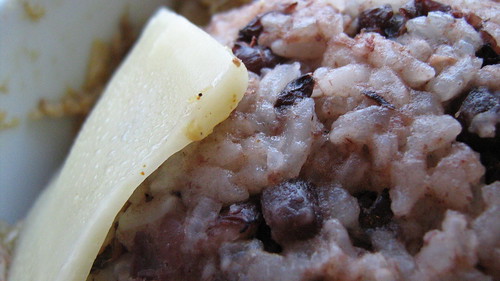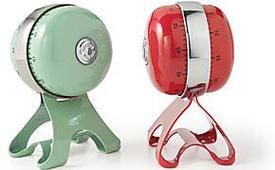 So I opened the cabinet to see what I could do about dinner and realized that, while we had come in under budget this week when grocery shopping, we had missed a few things. Important things like meat.
So I opened the cabinet to see what I could do about dinner and realized that, while we had come in under budget this week when grocery shopping, we had missed a few things. Important things like meat.That's not strictly true, of course - the butcher's department is my favorite part about grocery shopping and a trip to the market isn't quite fulfilling without some quality time spent poking through the ground beef trying to find the elusive packages of 90% lean (perfect for burgers - 85% is too fatty and 93% doesn't have enough fat to taste like anything much) but the chicken breast we picked up I had already boiled for sandwich meat for the week (more on that in a couple of days), the shrimp vanished Saturday during a cocktail sauce experiment and the stew meat had ended up in a fantastic chili on Sunday night.
Change of plans, then - I went about seeing what I could do to clear out the fridge.
- - -
I have one memory of preschool, and that's of celery sticks with peanut butter or cream cheese in the middle. I could have sworn it was a family thing but when I mentioned it in passing to my father he steadfastly claimed to have never heard of such a thing. Despite the pleasantness of the memory, I'm not a big fan of celery unless it's served next to a heaping pile of buffalo wings or boiled to hell and back in a soup. Something about the texture rubs me the wrong way.
Why do I mention this? Guess what caught my eye when I opened the fridge - celery with an inch of life left in it, and a jar of peanut butter on its last legs. Ah well.
But then I got to thinking: Celery goes with peanut butter. Peanuts are used heavily in Thai food. Thai food leans heavily on curry. Curry is all spices and time, I've got plenty of both and I hate, absolutely hate, wasting food.
So here you go -
 - a simple peanut and celery curry. It's hot enough to make your skirt fly up and it goes really, really well with a nice, slightly bitter beer (which, conveniently, I've also got in the fridge.)
- a simple peanut and celery curry. It's hot enough to make your skirt fly up and it goes really, really well with a nice, slightly bitter beer (which, conveniently, I've also got in the fridge.)I love it when a plan comes together.
Ingredients:
- 3 celery ribs, roughly chopped
- 1 small yellow onion, roughly chopped
- 2-3 heaping tbsp peanut butter
- 2 tsp salted butter
- 1 tsp olive oil
- 1 tsp minced garlic
- 2 cups broth; I used chicken, though vegetable would work fine, too
- 1 tbsp curry powder
- 2 tsp brown sugar
- 1 tsp cumin
- 1 tsp chili powder
- 1 tsp dry yellow mustard
- 1 tsp paprika
- 1 tsp white pepper
- 1 tsp black pepper
- 1 tsp dried parsley
- 1/2 tsp tarragon
- 1/2 tsp cinnamon
- Salt to taste
- 1/2 cup toasted pine nuts (I had them left over from a pesto gone wrong, so I figured what the hell)
Lightly brown the celery, onion, and garlic in the butter and olive oil in the bottom of a stock pot with a pinch or two of salt. Add the broth, the peanut butter, the pine nuts if you went that route, and the spices. Heat slowly over medium heat, stirring frequently, until it starts to bubble. Keep stirring for a minute or two - the peanut butter is going to take some elbow grease to mix in completely.
Once it's all combined, cover and reduce heat to low. Not medium-low; practically nonexistent low - the peanut butter is going to slowly sink to the bottom of the pot and if it's too hot it'll burn.
The longer you simmer it the better it will taste, but keep an eye on it and stir it every 15 minutes or so. It'll be done in 45 minutes, tasty in 60 and fantastic in 90.
Serve over rice. Feeds 3-4 people depending on their love of curry.



























